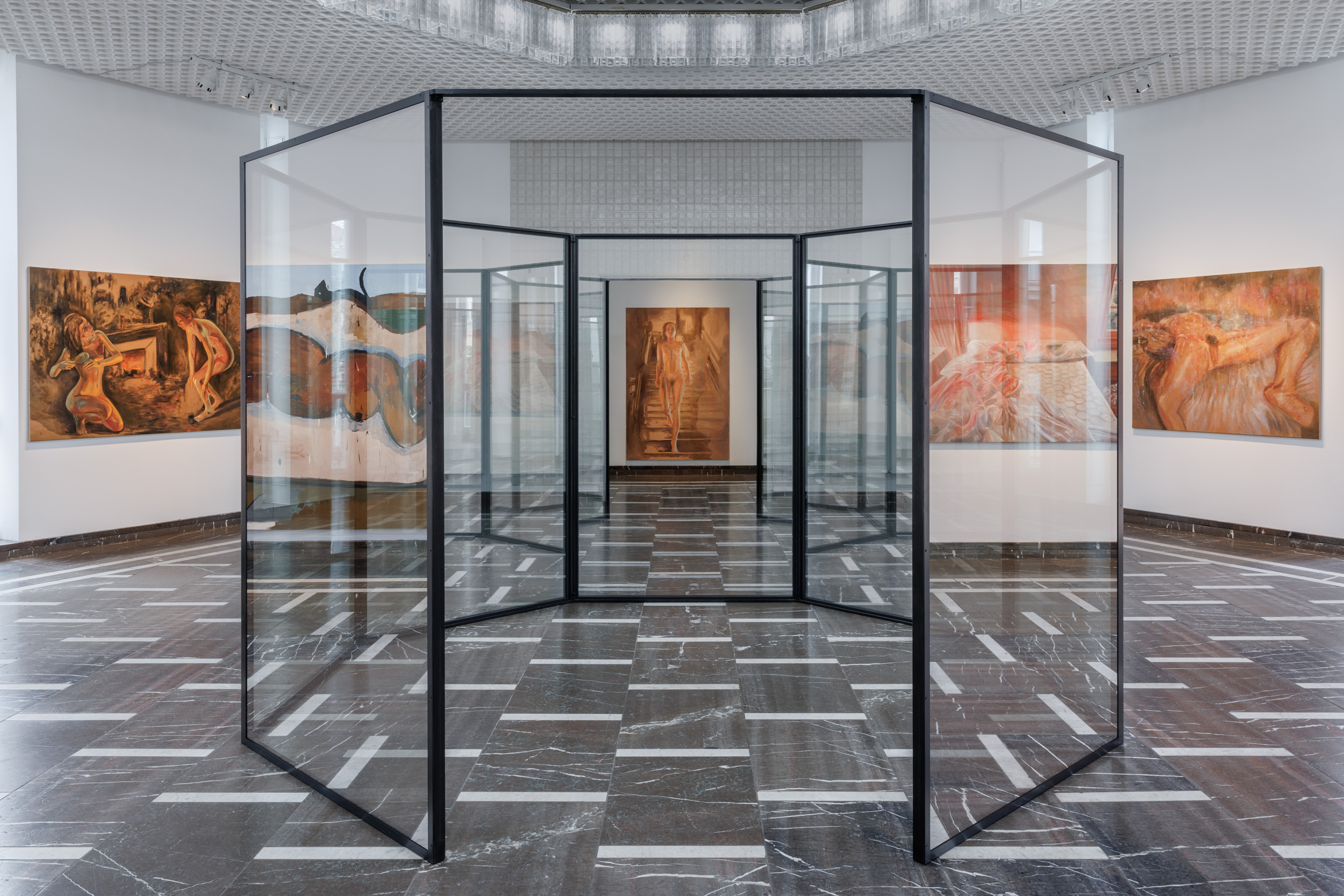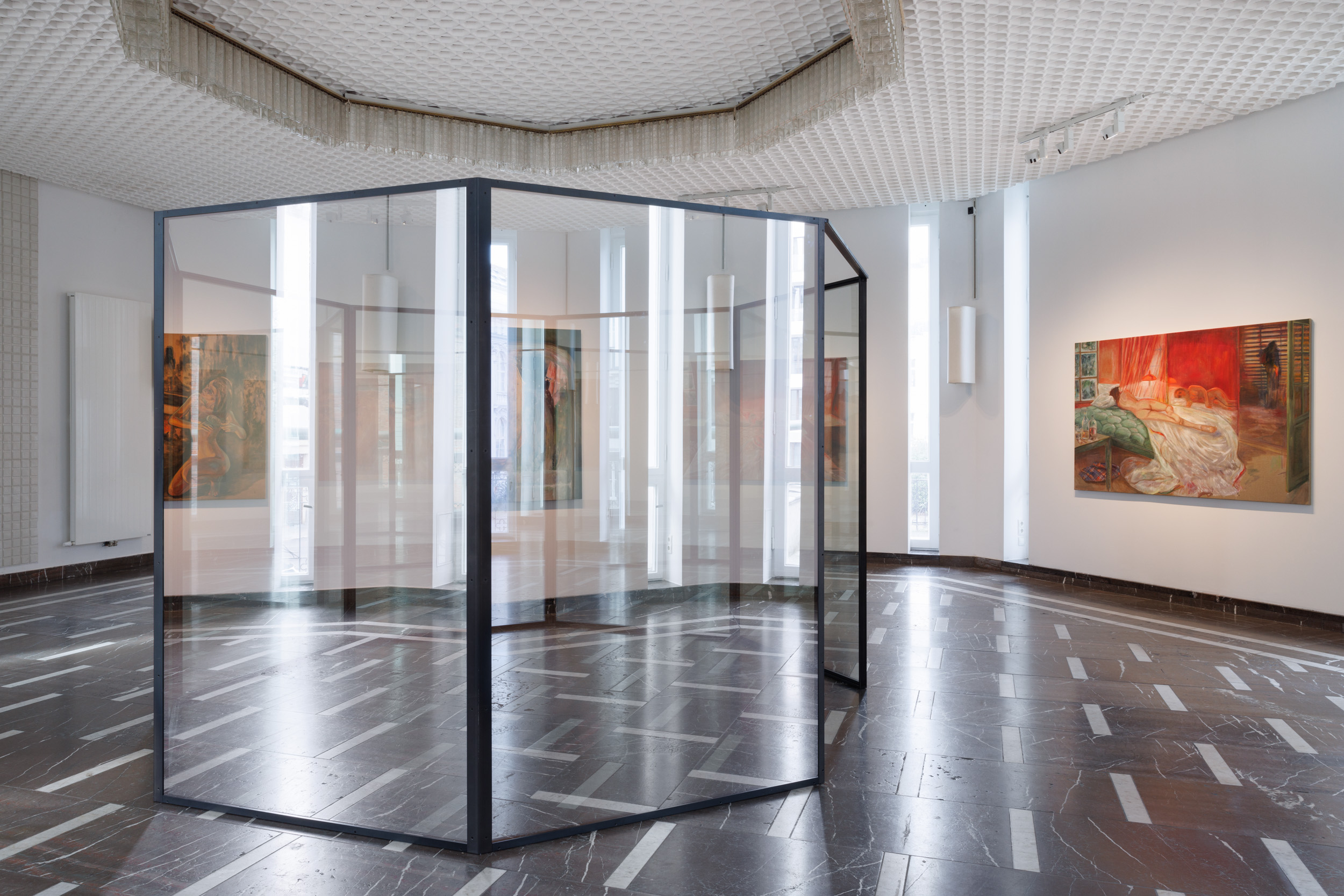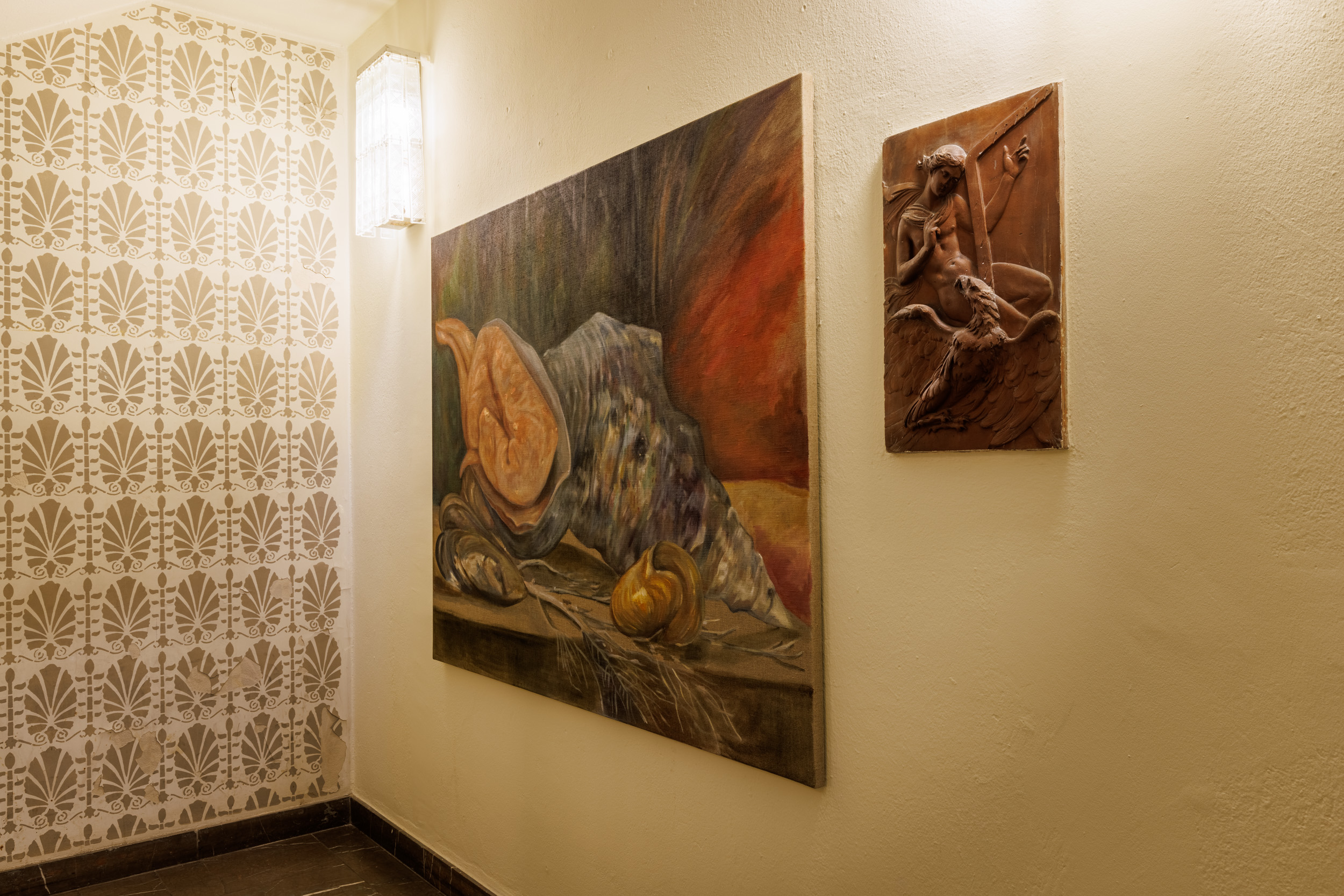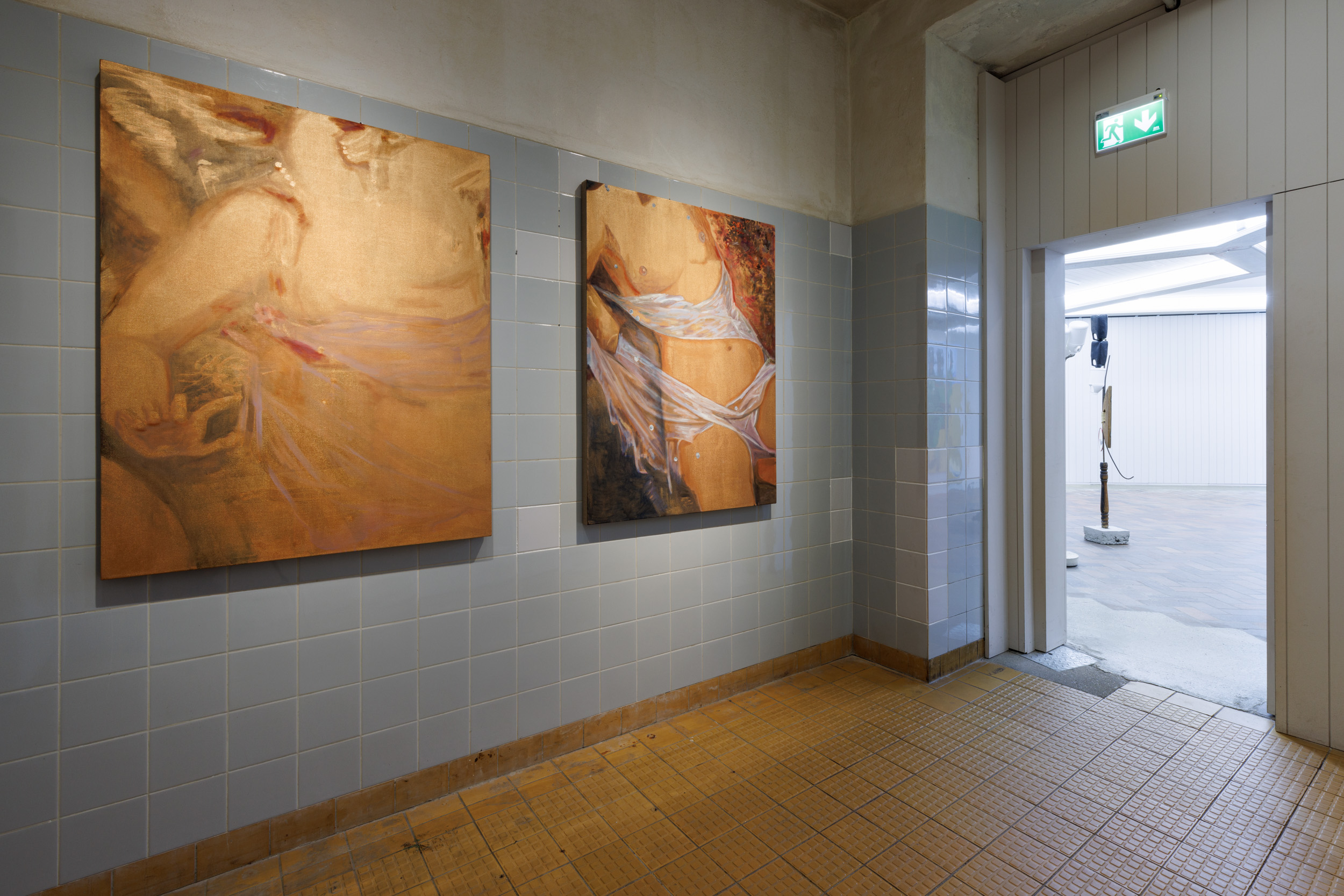Schinkel Pavillon
Berlin
Jill Mulleady
You Me
Feb 17, 2024
May 19, 2024

Jill Mulleady (1980 in Montevideo, Uruguay) and Henry Taylor (1958 in Ventura, USA) share a long- standing, close friendship and an absolute dedication to painting. The duo exhibition You Me is the manifestation of the bond between two artists of different generations and backgrounds, in which expressive figurative painting and an incisive reference to art history act as a common denominator. Through their imagery, Mulleady and Taylor explore ambivalences that prompt viewers to contemplate their stance on painting, particularly in the juxtaposition of the private and the public, as well as in the representation of bodies. At first glance, the respective artistic approach to the thematic worlds negotiated appears contradictory, but it is precisely these moments of tilt and the continuous challenge to break through and reoccupy common attributions, codes and thought patterns in which their painterly practice comes together.
The exhibition You Me explores the relationship between artist and subject, viewer and representation, and ultimately, the intersection of the public and the private realms.
Jill Mulleady‘s panoramic series of seven paintings captures an interior through various perspectives and moments, drawing the viewer into a site-specific intervention within the space. The glass sculpture transforms the octagonal pavilion into a panopticon, reflecting and absorbing the painted images depending on the viewer‘s position. By entering the one-way mirrored room, visitors are shielded from outside eyes and can observe others as they witness themselves the scenes depicted, suggesting a voyeuristic experience.
Mulleady reflects on the historical use of the female nude in painting and questions the traditional space given to the viewer of a visually captivating surface, using it as inspiration to develop her own iconoclastic language. Surfaces are disrupted by drips of condensation, fogs of steam, fragments
of bodies, and flashes of light. The violence bounces across beds-heets disturbed by licks of orange light [i], and onto the drips of water themselves, which seems to contain red reflections of blood or light, purposefully blurring the boundaries between the subject and her surroundings, merging her form with its own reflection and the architectural space itself.
Henry Taylor consistently and simultaneously embraces and rejects the tenets of traditional painting, as well as any formal label. Combining figurative, landscape, and history painting, Taylor’s vast body of work is rooted in the people and communities closest to him, often represented alongside poignant historic or pop-culture references. Taylor’s practice resona-tes with an expansive array of art historical references, from the expressive and politically engaged work of German painter Max Beckmann to the visionary and bold figurative work of US-American artist Bob Thompson. Exceeding the boundaries of the canvas, Taylor also creates assemblage sculptures, stacking and affixing disparate objects together to create a holistic record of his everyday routines with the materials that define them. Referring to this intuitive process as “hunting and gathering,” Taylor merges multiple references–histo-ric and contemporary–simultaneously. Through his wide-ranging œuvre, Taylor captures a complete narrative that reflects the breadth and depth of his subject.
In conversation with Mulleady and Taylor’s paintings there are also historic works on paper by Otto Dix, Käthe Kollwitz and Marcel Duchamp which cast a new light on the scenes depicted.
[i] Laura McLean Ferris, Mirrorworld, Essay, 2024





